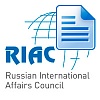The Safe World of the 21st Century: 167,000 Victims of Armed Conflicts in 2015
In
Login if you are already registered
(no votes) |
(0 votes) |
Author: Andrey Kortunov, Director General of the Russian International Affairs Council.
According to the International Institute for Strategic Studies (IISS), 167,000 people were killed in armed conflicts around the globe last year, down slightly from the 180,000 people killed in 2014. There is the belief that we live in an era of global instability that is characterized by increasing numbers of human losses, while the Cold War period is normally considered a period of stability and relative order. However, statistics suggest otherwise: the number of victims of conflicts in the second half of the 20th century is on average three to four times higher than in the 21st century.
First, there are virtually no large-scale interstate conflicts today claiming the lives of hundreds of thousands – and even millions – of people (the wars in Korea and Vietnam, the conflict between Iran and Iraq, let alone the wars of the decolonization period).
Second, the instability space in the 21st century is narrowing, rather than expanding, and large-scale military operations are under way in a single zone of instability only, albeit a rather large one, spreading from Nigeria to Pakistan. In the rest of the world, despite numerous conflicts and inevitable victims, the average chances of being killed in the course of a military operation are relatively low.
Data
— IISS: Armed Conflict Survey 2015
— Our World in Data: Number of state-based armed conflicts by type, 1946-2007
— Angus Hervey: The Decline of War
(no votes) |
(0 votes) |




